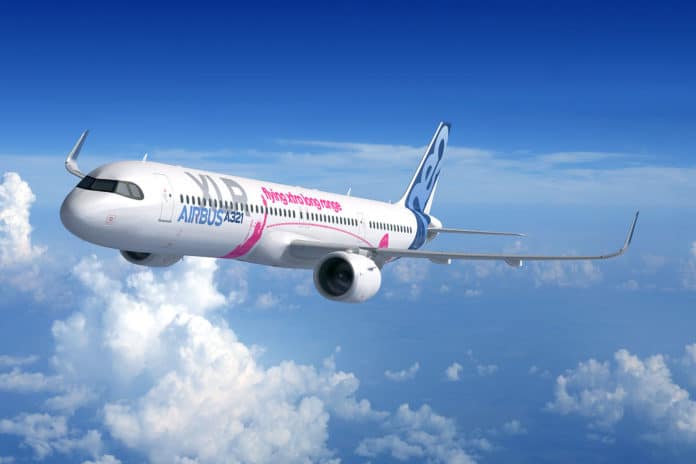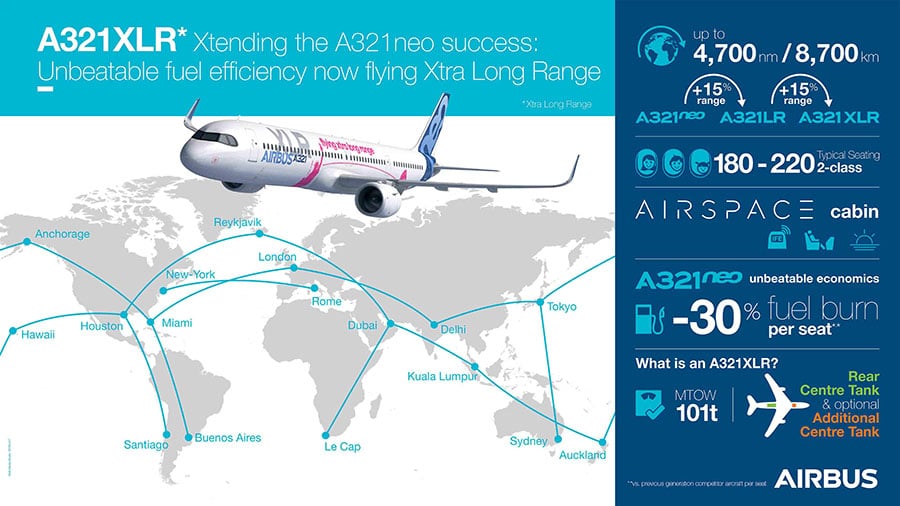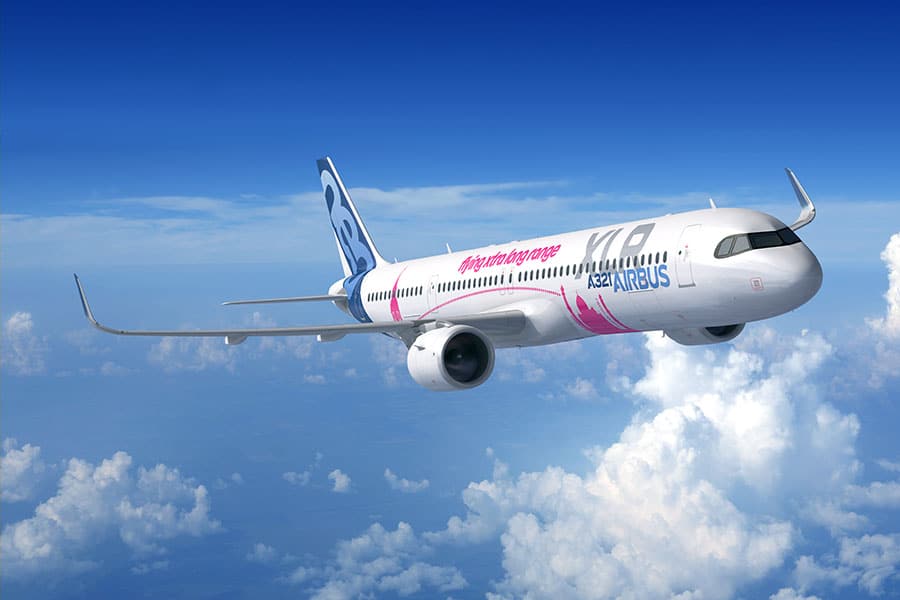On the first day of the Paris Air Show 2019, Monday, June 17, aircraft manufacturer Airbus unveiled designs of its new A321XLR jet. The aircraft, the company says, will be the world’s “longest-range single-aisle airliner.”
The longest-range, narrow-body jetliner is scheduled to take to the skies in 2023. The A321XLR (Xtra Long Range) has an unprecedented long range of up to 4,700 nm (8,700 km) – 15% more than its predecessor, the A321LR, which can fly routes of up to 4,000 nm.
The European plane maker said the added range would enable airlines to operate a lower-cost single-aisle aircraft on longer and heavily traveled routes. These worldwide routes include India to Europe or China to Australia while further extending the Family’s non-stop reach on direct transatlantic flights between continental Europe and the Americas.
Besides, the aircraft’s new Airspace cabin will ‘provide the best travel experience to the passengers, while offering seats in all classes with the same high-comfort as on long-haul widebody aircraft.’
The A321XLR carries between 180 to 220 passengers if operators choose to seat passengers in traditional two-class seating. This 44.51 meters long airplane offers the largest overhead storage compartment, called “XL bins, with 40% more volume. Furthermore, iconic ceiling lighting, new sidewall panels, a new lavatory design, new window bezels, and colored LED lighting for the cabin add extra comfort for the passengers.
‘The A321XLR has been designed to maximize overall commonality with the A321LR and the rest of the A320neo Family while introducing minimal changes needed to give the aircraft an Xtra Long Range with increased revenue payload,’ Airbus writes in an official press release.
Some of the changes include to the aircraft are – a new permanent rear center tank (carrying 12,900 liters of fuel) for more fuel volume; a modified landing gear for an increased maximum take-off weight of 101 metric tonnes.
In addition, the aircraft’s aerodynamic-enhancing Sharklets on the wings and fuel-efficient engines ensure outstanding environmental performance. The company claims that the plane will have a 20% lower fuel burn per seat, 5,000 tonnes less CO2 per year, and a noise footprint that is 50% lower for passengers and airports.
According to Airbus, the A320neo Family is the world’s best-selling single-aisle aircraft, with over 6,500 orders from more than 100 customers since its launch in 2010.


